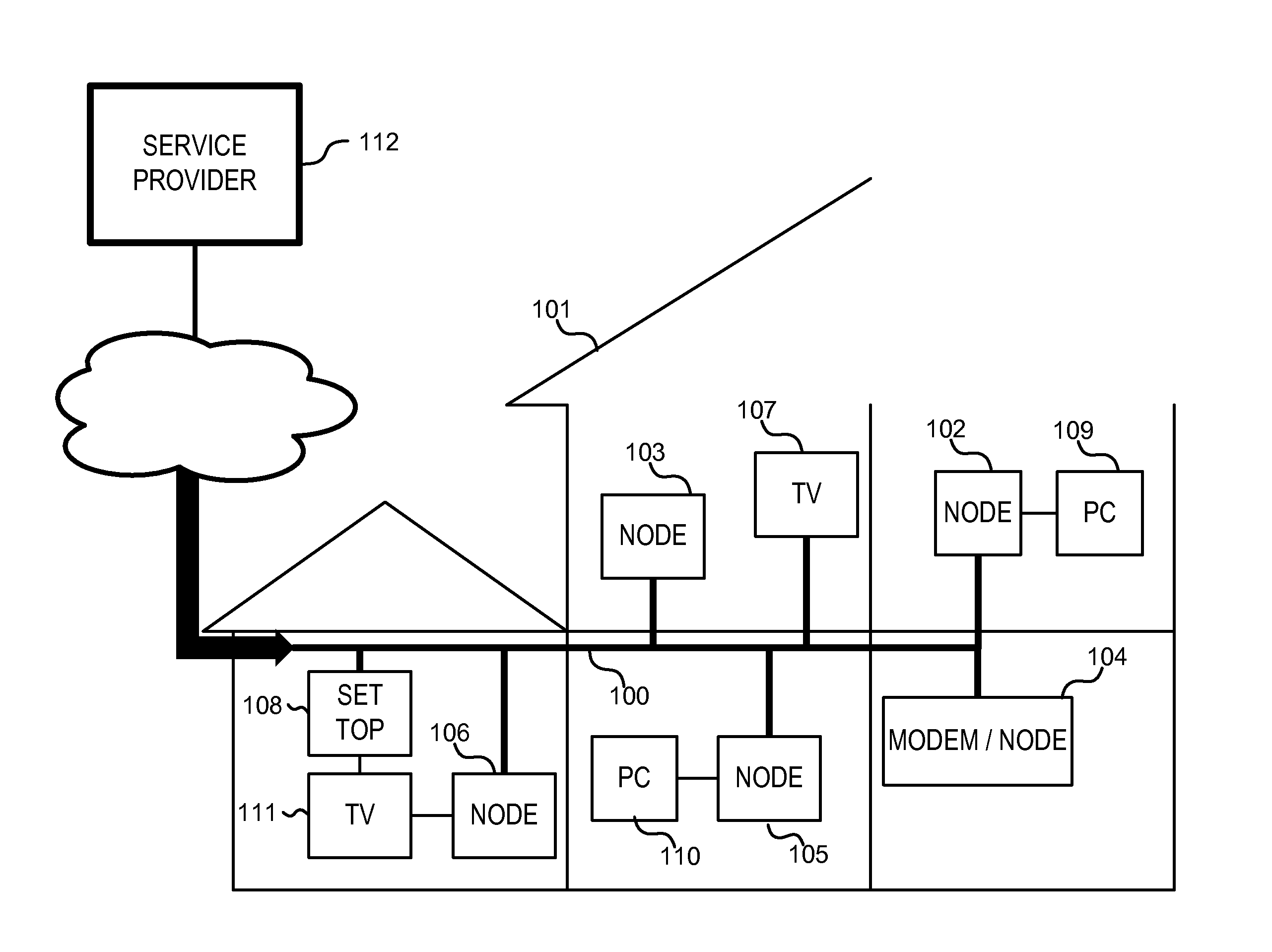Flexible Reservation Request and Scheduling Mechanisms in a Managed Shared Network with Quality of Service
a shared network and reservation request technology, applied in the field of reservation request and scheduling mechanisms, can solve the problems of increasing the complexity of coordinating communication between the network nodes, significantly affecting the quality of experience, and not being able to guarantee the resource requirements of prioritized qos flows
- Summary
- Abstract
- Description
- Claims
- Application Information
AI Technical Summary
Benefits of technology
Problems solved by technology
Method used
Image
Examples
Embodiment Construction
[0041]According to various embodiments of the disclosed method and apparatus, nodes on a network (also referred to as network devices) and a Network Coordinator (NC) enter a PQoS flow admission process for a PQoS flow in order to allocate resources by the NC and each of the nodes that will either be receiving or transmitting packets of the flow (i.e., gain admission of the PQoS flow). The NC determines whether to admit the PQoS flow based on parameters provided in a “Traffic Specification” (TSpec), including a parameter referred to herein as Short Term Average Rate (STAR) and including a latency tolerance parameter. The TSpec indicates what is necessary for the information transmitted in a flow to be transmitted and received at the other end in a manner that provides a satisfactory user experience. For the purposes of this disclosure, a “flow” is a communication of packets of information between a transmitting node and at least one receiving node.
[0042]In one embodiment of the discl...
PUM
 Login to View More
Login to View More Abstract
Description
Claims
Application Information
 Login to View More
Login to View More - R&D
- Intellectual Property
- Life Sciences
- Materials
- Tech Scout
- Unparalleled Data Quality
- Higher Quality Content
- 60% Fewer Hallucinations
Browse by: Latest US Patents, China's latest patents, Technical Efficacy Thesaurus, Application Domain, Technology Topic, Popular Technical Reports.
© 2025 PatSnap. All rights reserved.Legal|Privacy policy|Modern Slavery Act Transparency Statement|Sitemap|About US| Contact US: help@patsnap.com



